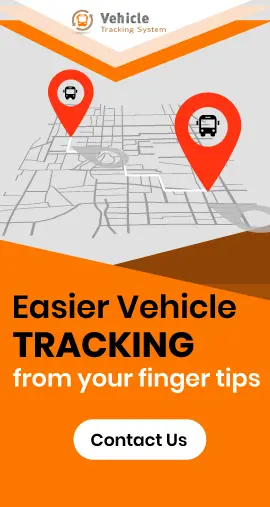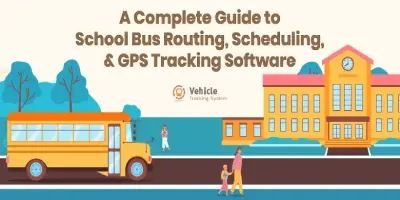GPS Tracking Solution for Road Transport Security: Latest Developments
April 12th, 2018
With the advent of the Global Positioning System satellites, tracking vehicles on roads have been quite easy.
Vehicle has been made robust from every nook and corners in the world.
Tracking GPS systems are being used by 90% of the transportation companies in the world and the rates are increasing concomitantly with the use cases with it.
Not just big transportation companies, but GPS is used by hospitals to track the ambulance on roads, by schools to track school buses and students, by cab aggregator companies to locate the position of its riding customers.
What more to say, can you imagine exploring an unknown place without the help of Google maps which uses the help of the global positioning system (GPS).
Tech Advancements in the Domain
There have been a lot of technological advancements in the area of GPS research.
From where it was used primarily in the area of defence to being commonly used now among civilians.
Let’s take a look at how far has the technology reached in terms of its wide scale adoption and latest developments.
1. Countries across the globe are getting its benefits from GPS technologies in getting more safety in terms of road travel.
2. Multinational companies in the transportation industry are gearing up their geospatial data layers and introducing it to the road, and to map even the remotest of locations of every segment, traffic signals, signal boards.
3. The mobile global positioning system is looking forward to enable the government people to take the geospatial information to the industries and consumer segments where it can be better used like streets, highways, railways.
4. Nowadays a considerable set of vehicles in the market are equipped with a GPS based navigation mechanism that provide benefits to the travellers and drivers equally.
When the system is tied up in alignment to the motion sensors in the vehicle, the device can gather data based on the locations where the vehicles go around when it detects a pothole or an accident ahead.
At the onset, the benefits GPS tracking includes its ability to give safety to drivers.
Features & Adaptability
1. Many companies develop GPS based tracking systems which can be hard wired to the existing vehicle interface.
2. Distress signals can be sent to a web or mobile interface based on when and how it is generated.
3. Helpful information and data can be sent to the control room based on the speed, driver performance.
4. Real time tracking is leveraged by fleet companies to ensure that the physical goods are delivered safely, in time.
One of the important features is to generate the report to the company management based on the data generated during the trip.
5. First aid and emergency services could be rushed to the spot of distress based on the coordinates given to the control panel by the GPS tracking system installed in vehicles.
6. Enabling GPS technology to assist with and track to forecast the transportation of freight has created a disruption in logistics industry.
The time definite delivery systems were something which was introduced recently by the trucking and parcel delivery service companies.
7. The guaranteed delivery and pickups are promised here unlike the conventional way wherein the customer has no clue where his cargo is.
This has been made possible irrespective of time zones and short distances.
Many industrial segments use GPS to identify and do surveys on their rail and highway road networks, by identifying the location of features on, near, or adjacent to the road networks.
The main areas of the implementation are in service stations, emergency stations, entry, and exit points.
The global information system is gathering the data as input from these data points and this database knowledge helps transportation agencies to track a GPS enabled vehicle or person.
Connectivity, Data Analysis and More
To enhance, and for using the security systems in GPS to the maximum, the transport security system is implemented within operational and transport control systems.
It also includes very critical functions like electronic positioning systems within the cargo transport vehicles.
Vulnerability always finds its place even when the technology is so advanced.
From the usage of latest cellular developments like 4G, 5G systems and short range connectivity of WiFi, RFID and Bluetooth systems, a combination of these technologies are enabled to create a synergy to improve the accuracy and create a sustainable system benefiting all parties involved.
With the harnessing of the real power based on the chunks of data generated, the data can serve as a catalyst for the introduction of significant impacts throughout the end to end life cycle of vehicle tracking and security.
The fleet managers are equipped with sophisticated tools in order to view and analyse the data generated in terms of the traffic, transportation.
The technology is on its way to be in a billion devices in the near future and it’s obviously been a boon in the tracking and monitoring niche.

